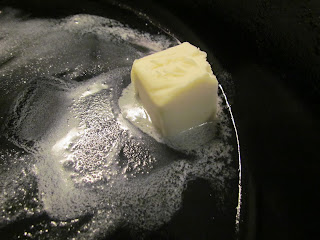I'm not sure how many people get into a mode where they
must figure a certain something out.
It doesn't happen all the time for me, but it does occasionally- most notably when I'm cooking.
I usually make something several times within a short(ish) timespan.
This was one of those things.
The news is that there's almost always a base to start with. This wasn't just a chocolate mousse recipe created out of thin air- there's no need to reinvent the wheel. There are so many recipes out there.
I made a little change one way, but it wasn't exactly what I was looking for. Then I tried a little something else...
Several mousses and a couple of weeks later... the whole thing now officially constitutes a project.
Is it completely finished? Maybe not. Maybe this will go on indefinitely, albeit at a slower pace.
If you make multiple recipes/renditions of chocolate mousse, you need a captive audience capable of eating it. True, it's not such a bad prospect. There are worse things than chocolate mousse (being stuck in traffic when you're already running late, losing your passport, and having your wallet stolen are all worse than chocolate mousse, let's be honest).
That said, I believe there is such a thing as the chocolate mousse saturation point, and although I'm sure it's different for everyone, it's still one of those looming facts of life.
You can't just make it once a day for several days- that's probably too much for most people.
And so, because of the potential and very real threat of being over-moussed, if you plan to work on recipes it's nice to have a variety of people to help you with your research. Another helpful thing is the ability to cut the recipes in half if at all possible. That way when you finally get things the way you want them, you haven't had tons of whatever it is you're working with, and all you have to do is readjust the numbers a bit.
From what I know of chocolate mousse history, it is said to have been invented by the French Post-Impressionist artist Henri de Toulouse-Lautrec. The more I think about it, I'd never have pictured him as the chocolate mousse inventing type (I have other thoughts, yes, chocolate mousse thoughts, no). I do wonder whether his meringue and chocolate combination was an "accident" as ganache was, or if it was more of an experimental endeavor. It is a pretty great invention though.
A couple notes:
Folding a mixture is stirring it by scraping the sides and bottom of the bowl so as not to deflate the mixture. Bring it up from underneath and turn it over while turning the bowl with the other hand. Personally, I scrape partially around the side of the bowl and then come up through the center with each turn. It's ok if there are a few streaks of cream in the mousse- it's better than over mixing it and losing the air and volume you worked so hard to get into it.
Be careful when melting chocolate over water. Chocolate and water don't mix well, and in fact chocolate will seize and can be ruined by water. Also make sure that any of your tools that come into contact with chocolate are completely dry.
Adapted from The Best Recipe
Dark Chocolate Mousse
Serves 6-8
7 oz. (200g) 60-65% bittersweet chocolate
4 T (57g) unsalted butter (or use salted and omit the pinch of salt)
Pinch of salt
1 t (teaspoon) vanilla extract
2 T (30ml) espresso (if you have instant, mix 1 heaping teaspoon with 1/3 c boiling water)
4 large eggs, separated
2 T (25g) sugar
2/3 c (160ml) heavy cream
Optional for serving:
Extra whipped cream, chocolate shavings, and/or raspberries
Melt chocolate in a medium bowl set over a pan of simmering water. Remove the bowl from the heat and add the butter, 1 T at a time, whisking to fully incorporate each tablespoon before adding the next. Stir in the salt, vanilla, and espresso. Add egg yolks, one at a time, and whisk each in completely (the mixture may look a little curdled and like it may have separated a bit, but it's ok). Set the mixture aside.
In another medium bowl whisk egg whites until foamy. Slowly add the sugar, whisking constantly until soft peaks form. Whisk about 1/3 of the whites into the chocolate mixture. Fold
about 1/2 of what egg whites are left into the chocolate with a rubber spatula. Once fairly well incorporated, fold in the last of the egg whites, being careful not to over stir- you want to keep all those airy bubbles in the mousse.
Whisk the heavy cream with clean beaters or a clean whisk until soft peaks form, then fold about 1/2 of it into the mousse. Repeat with the remaining cream.
Spoon the mousse into cups, bowls, or glasses, cover and refrigerate at least 2 hours.
Serve with garnishes as desired.
Mousse is best texture-wise within 24 hours.










































